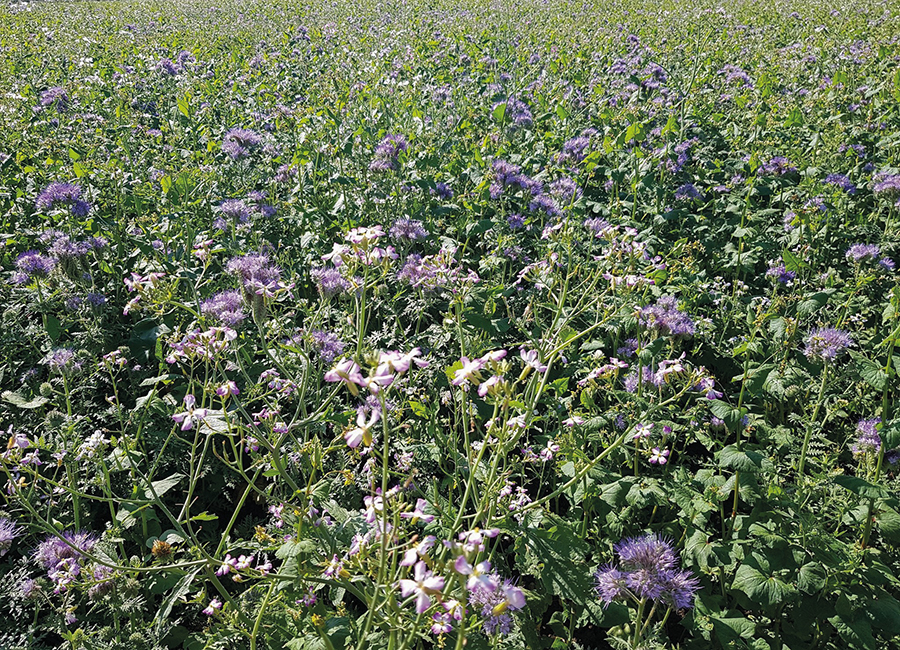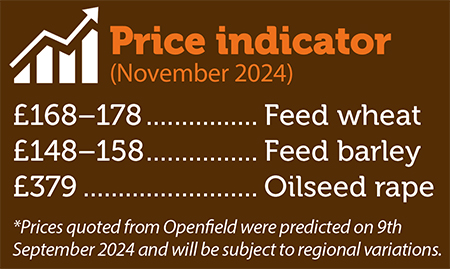Getting the most out of your cover crops
24th September 2024
This month’s update explores the benefits of cover cropping and how to lay the foundations for your next crop.

Cover crops protect and enhance the soil when a cash crop is not growing; but they can also boost your profits if thought and planning is put into the process, writes Openfield environmental technical advisor, Delyth Gilman.
Cover crops are fast growing plants – often legumes, grasses, brassicas and cereals – that are planted after a cash crop to bring a plethora of environmental benefits. Aside from the obvious benefits of improving soil structure, preventing soil erosion, conserving soil moisture and protecting water quality, they also feed many types of soil organisms and help increase soil organic matter content and the number of earthworms, especially if combined with no-till.
Selecting the right cover crop mixture for your farm requires planning if you want to maximise the potential benefits. As Gemma King, Openfield fertiliser trader, mentions in her update later, soil testing should be your first port of call to determine the foundation, not just to benefit your main cash crop but also to determine which cover crop to sow to help make up any shortfall in soil indices.
For example, buckwheat can increase phosphate mobility in the soil, legumes fix nitrogen and mustard act as a biofumigant as a method of pest control. Incorporating deep rooted varieties into your mix can also help increase soil organisms and organic matter and break down compaction.
A mixture of different species will enhance the benefits to the soil and the environment, but consideration must also be given to the crop rotation for disease and pest carryover into the next cash crop. Legumes can be an issue where there are peas or beans in the rotation; some brassicas can increase clubroot and slug risk in oilseed rape; and some clovers and small grains can increase wireworm risk in potatoes.
Cover cropping enhances the overall resilience of a farming system through reducing the need for synthetic fertiliser and pesticides, making it an important component of sustainable agriculture. The Sustainable Farming Incentive also offers payments for spring, summer and winter multi-species cover crops, making establishing them even more appealing.
Fertiliser matters
If you’ve recently completed crop removal, now is the perfect time to sample your soil and set the foundations for your next crop, writes Openfield fertiliser trader Gemma King. Soil sampling is a cost-effective method to gain a comprehensive understanding of your soil’s health, especially after nutrient offtake during harvest.
It identifies nutrient deficiencies or surpluses, showing current indices and offering recommendations to correct or maintain them.

A key aspect of soil sampling is assessing soil pH. Recent data shows that nearly 40% of UK arable soils tested in 2023 had below optimal pH levels. Having below optimal soil pH levels would limit nutrient availability, reduce yield, and cause financial implications. Testing pH helps determine if lime application is needed to correct these issues.
Soil sampling also fine-tunes your fertiliser strategy and complements other tools like grain nutrient analysis, providing a complete picture of soil health. Additionally, it ensures compliance with the Farming Rules for Water and Sustainable Farming Incentive requirements, optimises nutrient management, and boosts yields by maximising nutrient uptake, leading to better overall crop and soil performance.
Read more arable news
